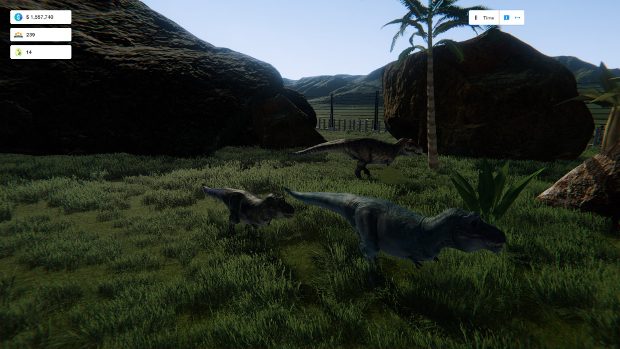

Notwithstanding anything to the contrary in this agreement, Previews are nontransferable and provided “AS IS.” By installing Previews on your device, you may void or impact your device warranty and may not be entitled to support from the manufacturer of your device or network operator, if applicable.
Mesozoica game parte 1 install#
We highly recommend that you do not install the Previews on any systems you don’t directly control or that you share with others. We recommend installing Previews on non-production devices that are not business critical because you are more likely to experience crashes, setting and policy changes, loss of data or apps, feature and functionality changes, cause other apps to stop working, be updated, or removed from your device automatically without notice and other potential issues.

Because Previews may contain more errors or inaccuracies, you should back-up your device before installing any Previews. In some instances, you may not be able to go back to your prior version of the Software. To recover, you may have to reinstall your apps, the operating system or re-flash your device. In some instances, Previews may even inadvertently damage your device rendering it inoperable or cause occasional crashes, data loss or apps to stop working or be deleted. Previews are experimental, which means that Previews may not operate correctly and may be substantially different from the commercially released version.
Mesozoica game parte 1 license#
You may use Previews only up to the Software’s expiration date (if any) and so long as you comply with the applicable Windows License Terms.
Mesozoica game parte 1 software#
Microsoft may make preview, insider, beta or other pre-release versions of the Software (“Previews”) available to you. Allosaurus have two horns above their eyes that are brightly coloured to attract mates and intimidate competitors. They attacks both small and large prey by ambush, using its upper jaw like a hatchet. It has been observed that Allosaurus is a very social creature, and hunts in packs. Allosaurus prey on large herbivorous dinosaurs and sometimes even other predators if given the chance. The Allosaurus will make a notable entry into any park focusing on the Jurassic Period or any carnivore themed area.Īllosaurus lived 155 to 150 million years ago during the late Jurassic Period, as the most abundant large predator and the lion of it’s time. For a while it was considered the largest carnivore until 1905 when Tyrannosaurus was discovered, but even this did not diminish Allosaurus' popularity and it is still widely known and familiar to many, thanks to its distinctive appearance, large size and fossil abundance. Allosaurus is part of the allosauridea family, a successful group of the therapods that lived from the Middle Jurassic to the Late Cretaceous and included several branches, including the enormous Carcharodontosauridae which included Carcharodontosaurus, Giganotosaurus and Concavenator, the neovenatoridae which includes Neovenator and Australovenator and the primitive metriacanthosauridae, which included Sinraptor, Metriacanthosaurus and Yangchuanosaurus.Īllosaurus has long since been a popular dinosaur. Allosaurus' bite was not as strong as the later tyrannosaurids, and used its upper jaw like a hatchet, dealing savage blows to prey. The hunting tactics of Allosaurus most likely involved ambush for smaller prey or when hunting the large sauropods, using fear tactics driving the rest of the herd away from a weak or slow individual to separate them. Alone or in packs, Allosaurus is a dangerous predator.

It has long been debated whether or not Allosaurus hunted in pairs or packs to bring down large prey. Allosaurus lived alongside many large sauropods such as Apatosaurus and Diplodocus, the armored Stegosaurus, smaller ornithopods such as Dryosaurus and smaller carnivores such as Ceratosaurus, so there was no shortage of prey. Allosaurus is a large therapod with a distinctive narrow head with a pair of crests above its eyes, presumably for display purposes during courtship. Allosaurus was once the most successful and widespread across the Morrison Formation in the United States of America, with specimens also possibly unearthed in Tanzania's Tendaguru formation and Portugal's Lourinhã formation.


 0 kommentar(er)
0 kommentar(er)
